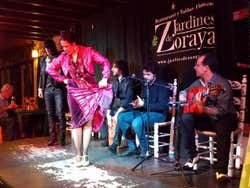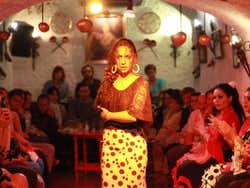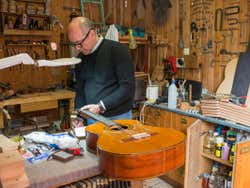
Flamenco in Granada
Flamenco or cante jondo is a blend of vocals, dance, and expressions that became popular in Andalusia in the 18th century and has spread to other regions such as Extremadura and Murcia. In 2010, Unesco declared flamenco Intangible Cultural Heritage of Humanity.
Origin of flamenco
It is difficult to pinpoint the origin of flamenco, as it was born from the fusion of Arab, Romani, Jewish, and Christian elements. All these styles are intermingled in Andalusian culture, giving rise to a folkloric dance with a long tradition.
Flamenco involves a lot of improvisation. On the tablao, dancers accompanied by musicians and palmas, hand-clapping, move on stage and interpret the deepest feeling of flamenco.
Over time and throughout the different areas of Andalusia, flamenco has evolved and given rise to different genres: bulerias, malagueñas, fandangos, soleas or granainas.
A way of expressing feelings
One of the defining aspects of flamenco is its great emotional power. The dancers convey feelings as deep as passion, anguish, despair or love through their voice, body and face. So much so, that some flamenco styles such as alegrias or soleas are named after feelings.
The guitar strumming is combined with the zapateos, tapping sounds, on the tablao, and the laments of the accompanying singers, creating a unique atmosphere. All these elements are common to the flamenco of Cordoba, the flamenco of Seville, and other provinces of Andalusia.
Flamenco in Granada: the zambra
Granada is undoubtedly one of the most important cradles of flamenco in Andalusia. The city's major flamenco hub is Sacromonte, where every night the caves are filled with flamenco staged called "tablaos". Moreover, in this neighborhood, it is possible to find many artisan workshops of Spanish guitars, a key element of flamenco.
The zambra is a style of flamenco originating in Granada, which is defined by its Romani roots. The dance is performed barefoot, with a long skirt and castanets. The zambra dates back to the 16th century and shares some features with belly dancing. They began to become popular at weddings in Granada after the fall of the Nasrid era.
Enjoying a flamenco show
If you want to experience this form of art in all its glory, you can enjoy a flamenco show in the Albaicin amidst the unique setting of the Jardines de Zoraya. If you prefer to enjoy a Granada zambra, we recommend watching flamenco in the Cuevas Los Tarantos, in the very heart of Sacromonte.


